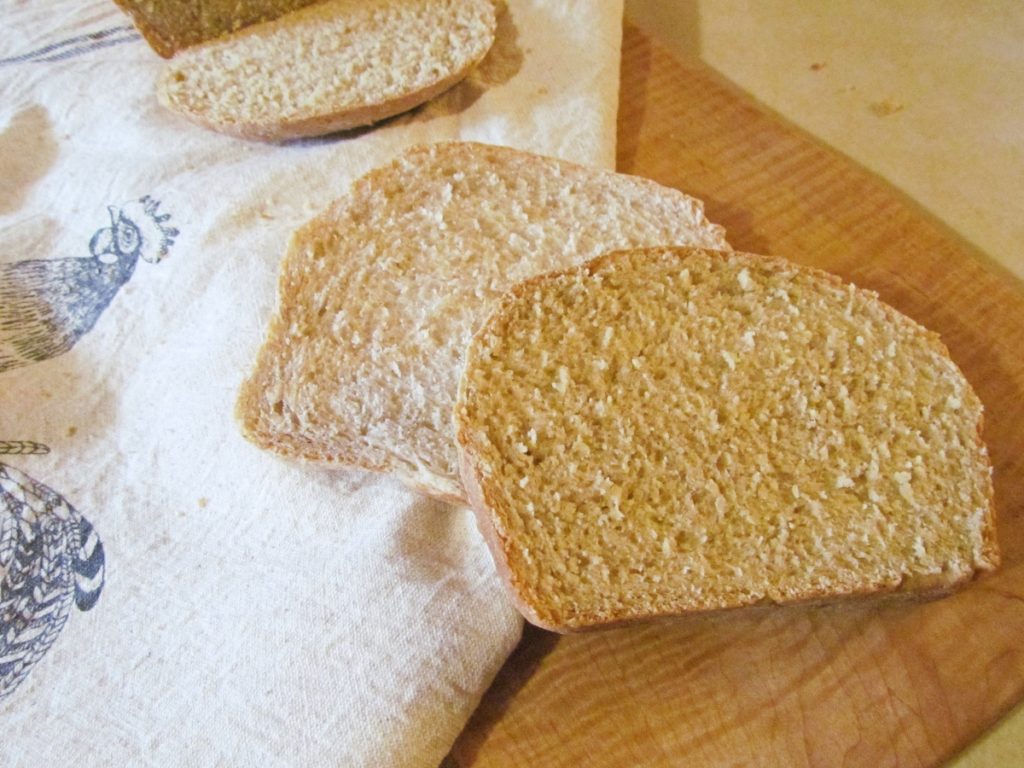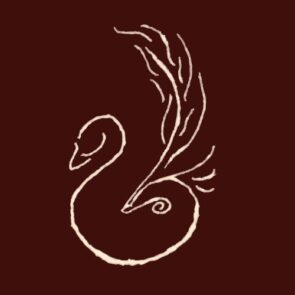“Bread, the best smell on earth,” says Mr. Brown in National Velvet1, and I think I would have to agree with him. (Well, except that chocolate smells pretty good too – how about chocolate bread!) There is something tantalizing and so homey and comfortable about the smell of hot, leavened bread. Do you know that smell? Have you ever been the creator of the bread that makes other people inhale deeply, sigh, and “hmmm” with delight?
If so – wonderful! Keep up the adventure.
If not, let me strongly encourage you to try your hand at making bread. It is a little complex, but not as hard as you might think, and so worth it – oh, so worth it. Especially if you are like me and the golden aura around the modern idea of “homesteading” has captured your heart. What says “home” and “wholesome,” “authentic” and “old-fashioned” better than homemade bread?
Hopefully, you’re convinced that bread is worth it, but where do you start? I’m sure you could start just about anywhere – the pile of old recipe books and magazines in your cupboard; Pinterest or allrecipes.com. But just to give you a starter from which to grow your bread adventure, let me mention a few excellent books that have come my way:
The King Arthur Flour® Baker’s Companion™2 –
Though it covers all baking, not just bread, this book is a marvelous resource of information on the various ingredients needed for bread as well as the science of baking it. And of course, it contains plenty of great recipes to practice on. A very thorough place to begin and to grow.
How to Make Bread3 by Emmanuel Hadjiandreou –
This book has a delightful range of bread recipes from amazing Challah (Jewish Sabbath bread), to delicious ciabatta, to authentic sourdough (for which you will need a starter before you can make the recipes). I think this would be a great place to begin if you have made bread before and want to try something new. I have found it a wonderful guide in my journey of exploring various kinds of bread. The photography is rich in this book, and shows the various stages of the bread. However, many of the recipes make very small loaves – I often find myself doubling or even tripling the recipes. (Pssst. There’s a recipe for “Chocolate and Currant Sourdough” in here. Yum!)
A Passion for Baking4 by Marcy Goldman –
I love this book dearly and often run to it when I’m looking for something to bake – usually sweets. It is an excellent collection of recipes for anyone who enjoys baking of all kinds. Her recipe for “Outstanding French Country Bread” is wonderful. Lovely photos and clear, no-nonsense directions. (Her scone and muffin recipes are amazing too, and don’t even think about making the “Mississippi Mud Bars”!)
English Bread and Yeast Cookery5 by Elizabeth David –
A charming volume. There is far more history here than the average aspiring bread baker needs (most of the more relevant information about flours and yeast and other ingredients is covered succinctly by the above-mentioned King Arthur Flour® volume). But this book is so rich with the love of bread that you may want to peruse it just for that. And if you have a taste for the historical, you might enjoy not only the history of, say, milling, but also the recipe section of this book. It is a history of various types of bread as much as it is a collection of instructions. I want to try “A Bloomer Loaf” , “Cottage Loaves,” and maybe some French breads and oat bannocks.
Explore, Experiment and Enjoy!

Bread baking may or may not have made it onto your “Quarantine List” for 2020, but I encourage you: if you’ve never made bread, try it and then try it again and again. If you already make bread, try something new.
I hope one of the above volumes – or another one – inspires you to discover the bread that makes your “homesteaders” smile and look for the butter.
Let me know what you find!
______________________________________________________________________________________________
- National Velvet, videotape, directed by Clarence Brown (1985; USA: MGM/UA Home Video, 1985).
- The King Arthur Flour Baking Company, Inc., The King Arthur Flour® Baker’s Companion™: The All-Purpose Baking Cookbook (Woodstock: The Countryman Press, 2003).
- Emanuel Hadjiandreou, How to Make Bread: Step-by-Step Recipes for Yeasted Breads, Sourdoughs, Soda Breads and Pastries (London, New York: Ryland Peters & Small, 2011).
- Marcy Goldman, A Passion for Baking (Birmingham: Oxmoor House, Inc., 2007).
- Elizabeth David, English Bread and Yeast Cookery (Newton: Biscuit Books, Inc., 1994).

YES! I’ve often remarked that, if I was rich, I would pay someone to clean my house so I could just spend all day in the kitchen! My daughter once commented: “The kitchen is my favorite room in the house, because that’s where the bread and cookies are.” 🙂
Thanks for the tip-off regarding How to Make Bread by Emmanuel Hadjiandreou. It is now officially on my “to buy” list!
….BTW….. how did you get your amazing logo on your bread? I have tried using a lame’ but with only marginal results. Looks like you’ve mastered the technique!!
Hi bilby, I totally agree with both you and your daughter about the kitchen! I hope you enjoy Emmanuel Hadjiandreou’s book. About the logo — my mom got me an amazing bread lame for Christmas. It’s basically a razor blade “threaded” onto the end of a forged iron stick, and it cuts really well. I have found rounded shapes like the logo to be tricky — still working on it. The last time I did one, I was experimenting with using the edge versus the corner of the blade.